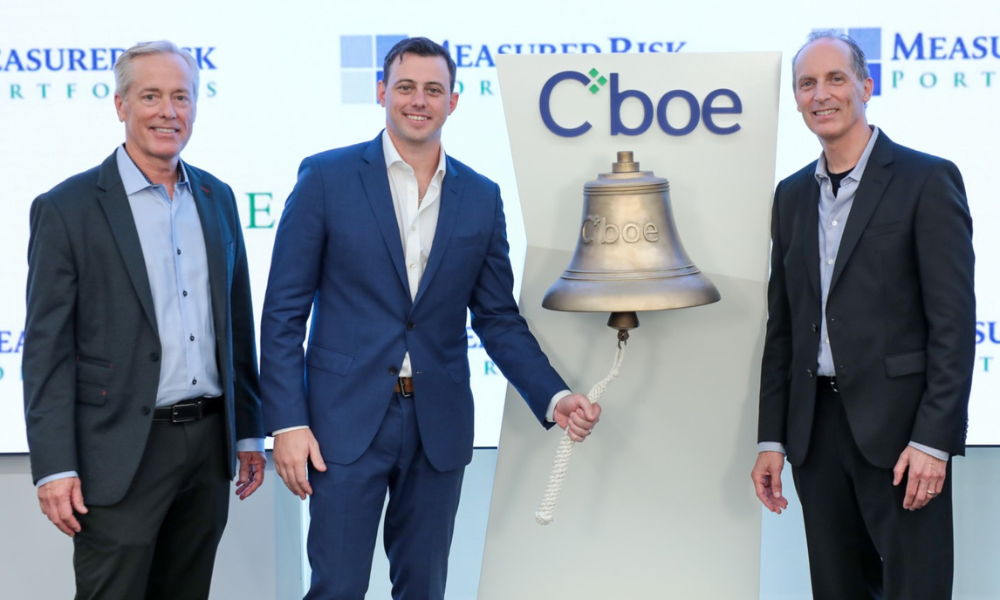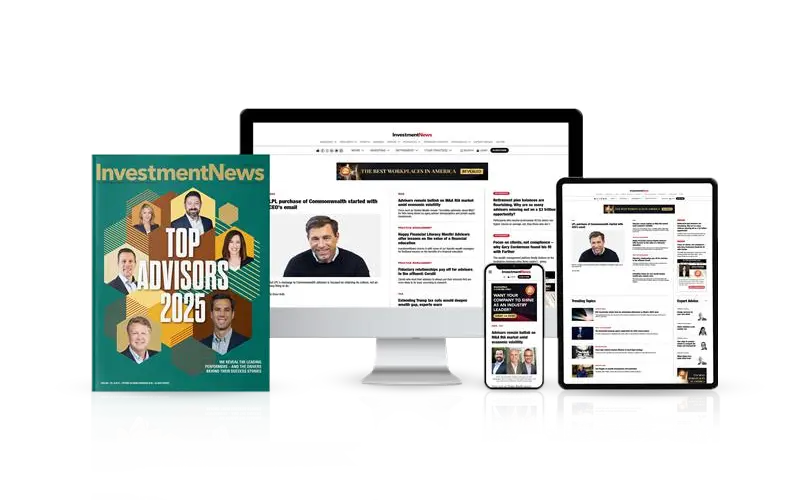

It’s often been said that “time in the market beats timing the market” and “asset location beats security selection" but in today’s current market environment, where the S&P 500 is up nearly 30 percent, valuations remain stretched and financial advisors face a conundrum.
And while the industry may have many reasons to be optimistic about the economic environment, valuations are high relative to many historical metrics, a belief espoused by Alexander Flecker, Head of Distribution at Measured Risk Portfolios, an RIA with almost $400 million, based in San Diego, California.
"People are still sitting on a lot of cash, with almost $7 trillion in money market funds, investors may still be a little bit hesitant to get in at the current market prices. It's tough to get that money off the sidelines when the market continues to hit new all-time highs,” said Flecker.
The firm’s Synthetic Equity product, also known as SynthEquity for short, combines the security of short duration US Treasuries with options-based growth, challenging conventional diversification models, while also favoring a unique portfolio allocation of 85 percent short-duration US Treasuries and 15 percent call options on the S&P 500.
Given the performance of traditional 60/40 and 70/30 portfolios in recent years, MRP boldly markets its flagship offering to cast doubts on the traditional methods of diversification to balance risk and reward, creating a solution designed to proactively mitigate risk while capitalizing on market upside.
At its core, the product provides advisors with a solution that can protect client assets, and advisory income streams driven by AUM, while still offering the uncapped upside potential of the equities market. SynthEquity was initially created out of the turmoil that happened during the Dotcom crash, Flecker explained.
"The founders were essentially doing the same thing that most people do, even to this day, in trying to create efficient and optimized portfolios to balance risk and with a moderate expected rate of return,” he said. “But the problem is that during a drawdown, advisors are forced to rely on back tests or hypothetical data to project what may or may not happen in the future."
The solution they landed on was a portfolio that allocates 85 to 90 percent of the assets to short-duration Treasuries, with the remaining 10 to 15 percent invested in call options.
"I don't know what the market's going to do tomorrow, next week, next month or next year, but I can tell you with almost 99 percent confidence the outsized allocation of 85-90 percent to the relative safety of short duration treasuries will serve as your fortress of solitude should the equity market take a turn for the worse," said Flecker.
Not only does the product offer downside protection and uncapped upside potential for advisors, but it also offers flexibility and customization, by offering three risk sleeves: Growth, Core and Lite, which allow advisors to tailor the portfolio to each client’s risk tolerance.
The Growth sleeve targets higher returns with a 12.5 percent risk budget, while the Core and Light options cater to more conservative clients. Advisors can choose the model that aligns with their clients’ objectives, ensuring flexibility and adaptability.
“I encourage everybody to go with the growth because a calendar year target 12.5 percent risk budget isn't all that high, even if you tend to be a more conservative investor, especially given the recent lackluster performance of the traditional 60/40,” said Flecker.
“If you never want to see your portfolio down double digits and you're more concerned about capital preservation, maybe the lite portfolio that targets a maximum 7.5 percent calendar year risk budget is best. If you fall in the moderate category, we have the core that targets a maximum 10 percent calendar year risk budget. Essentially, you tell us how much you're willing to risk in a calendar year, and we’ll build you a portfolio that's appropriate for your ability to tolerate potential losses,” he added.
SynthEquity’s primary drawback is a flat market with low volatility, which could erode the time value of options. However, active management helps mitigate this risk by reinvesting profits from call options into treasuries during rising markets when possible.
“Even if the broader market has a very challenging year, SynthEquity could record a loss up to the stated risk budget in options, which may be disappointing, but it’ll never be devastating,” affirmed Flecker.
After formalizing the strategy as a separately managed account (SMA) in 2012, SynthEquity has demonstrated impressive results. Since 2016, it has outperformed the S&P 500 net of a 75-basis point fee, with lower volatility and less than half the max drawdown as its benchmark, the S&P 500 Total Return, Flecker said.
This consistency seems to resonate with advisors and clients alike.
“SynthEquity has been a tailwind for advisors who understand the story, who can then go out and market it to prospective investors who may feel overwhelmed by behavioral biases, such as loss aversion, that are so detrimental to the long-term compounding potential returns the equity markets can offer.,” said Flecker.
“The way we manage the portfolios, and how advisors have gravitated to the strategy for their own clients is really shaping up to be something pretty incredible,” Flecker added.

Since Vis Raghavan took over the reins last year, several have jumped ship.

Chasing productivity is one thing, but when you're cutting corners, missing details, and making mistakes, it's time to take a step back.

It is not clear how many employees will be affected, but none of the private partnership's 20,000 financial advisors will see their jobs at risk.

The historic summer sitting saw a roughly two-thirds pass rate, with most CFP hopefuls falling in the under-40 age group.

"The greed and deception of this Ponzi scheme has resulted in the same way they have throughout history," said Daniel Brubaker, U.S. Postal Inspection Service inspector in charge.
Stan Gregor, Chairman & CEO of Summit Financial Holdings, explores how RIAs can meet growing demand for family office-style services among mass affluent clients through tax-first planning, technology, and collaboration—positioning firms for long-term success
Chris Vizzi, Co-Founder & Partner of South Coast Investment Advisors, LLC, shares how 2025 estate tax changes—$13.99M per person—offer more than tax savings. Learn how to pass on purpose, values, and vision to unite generations and give wealth lasting meaning
